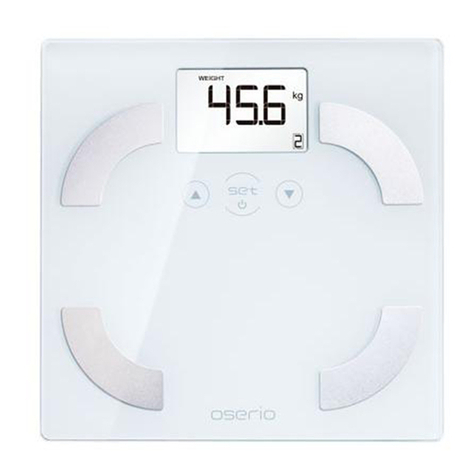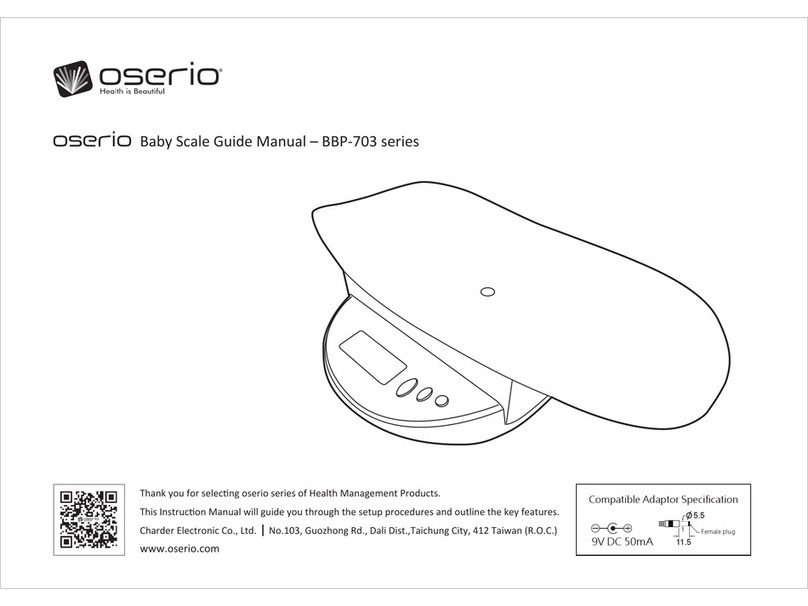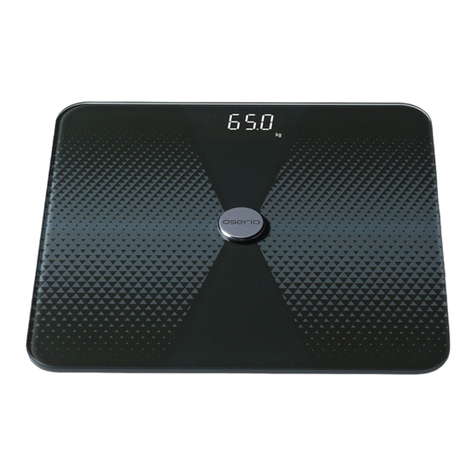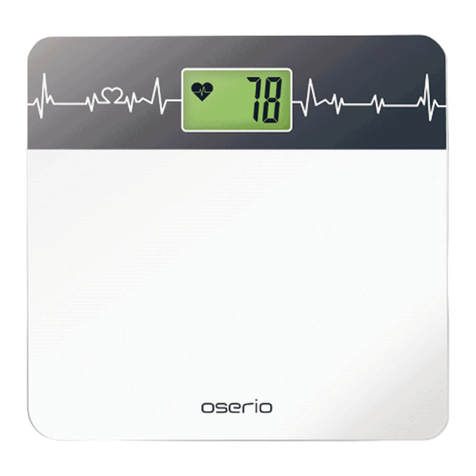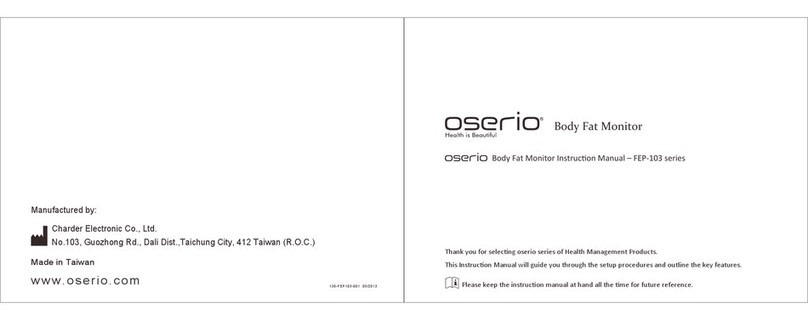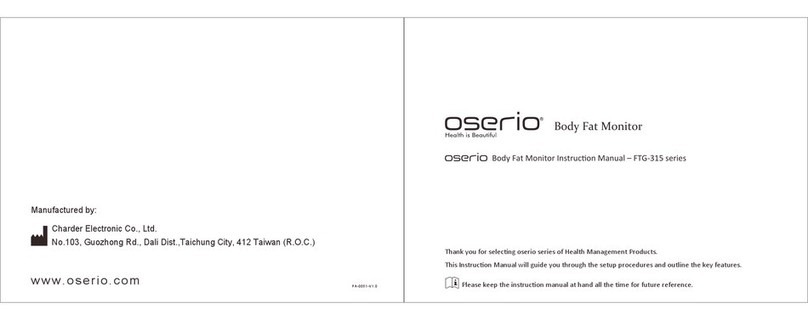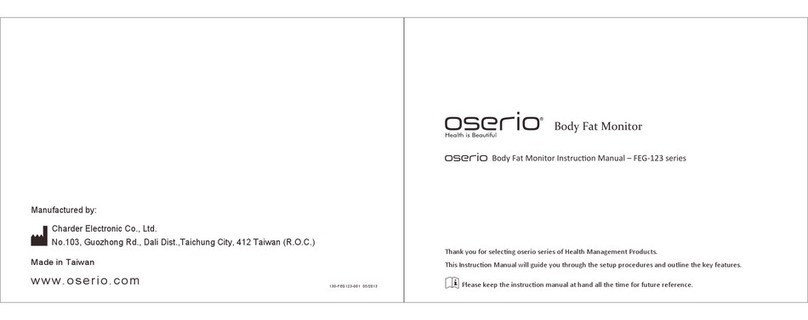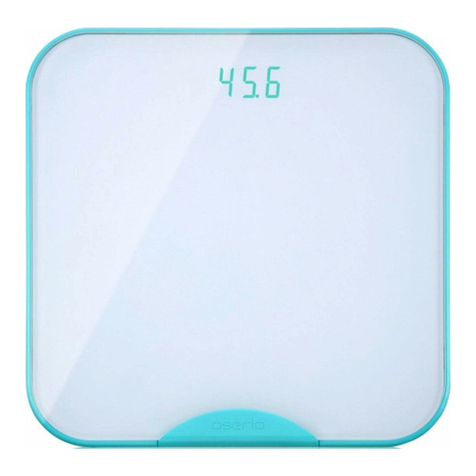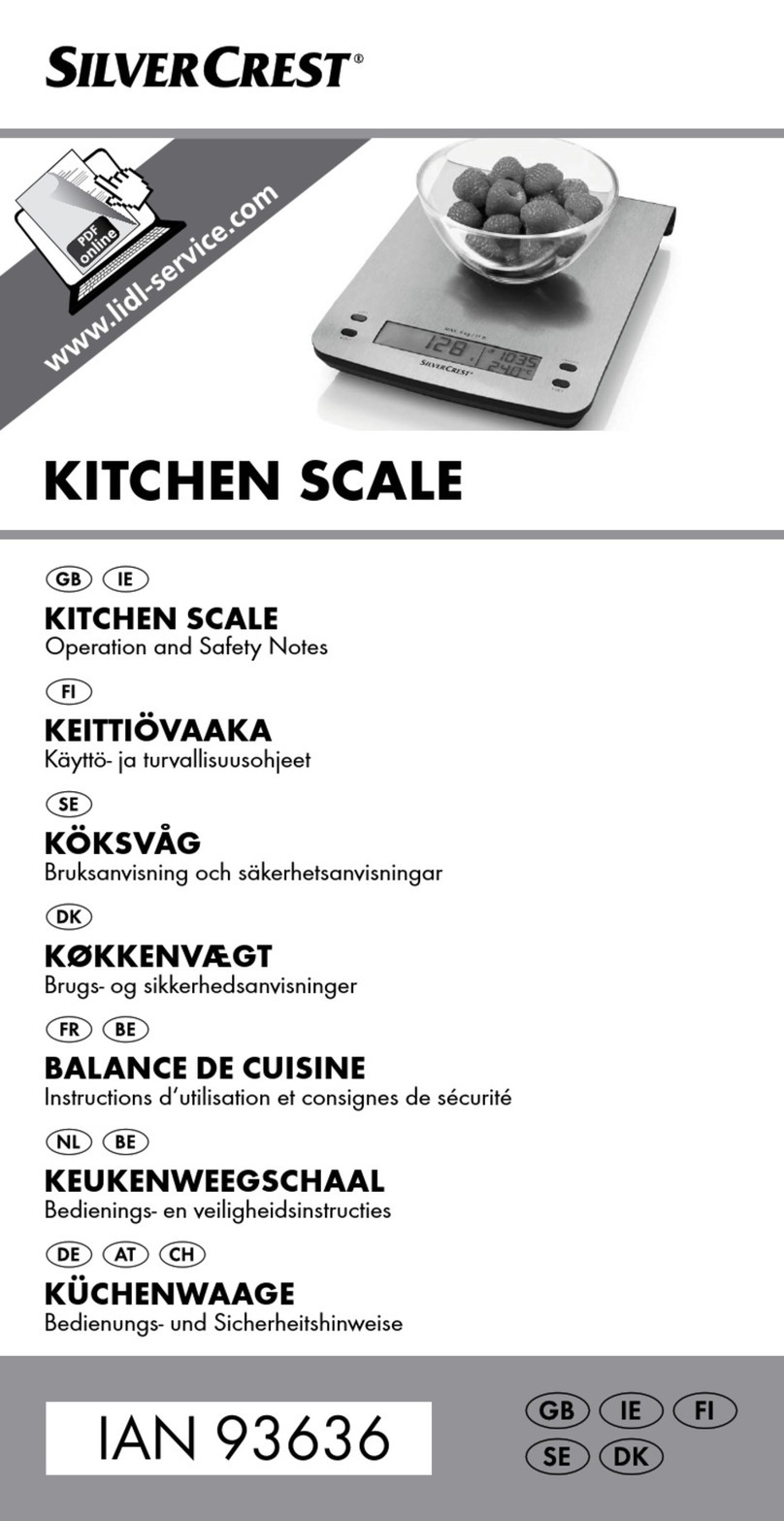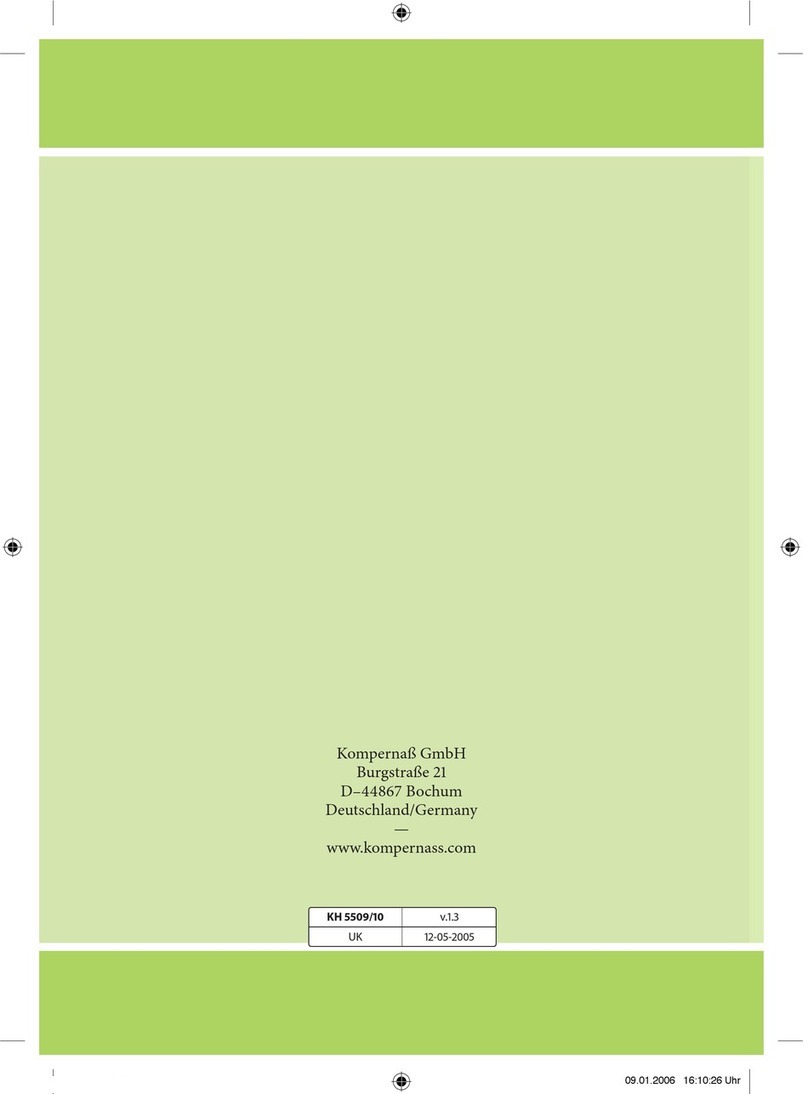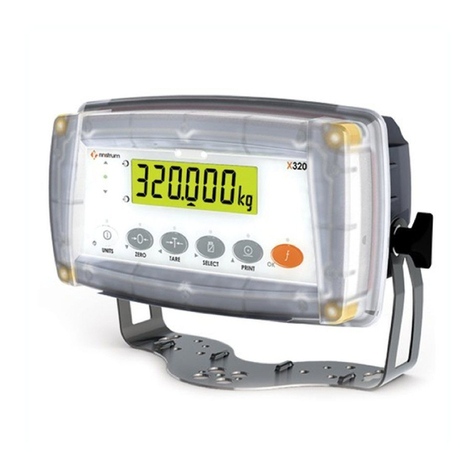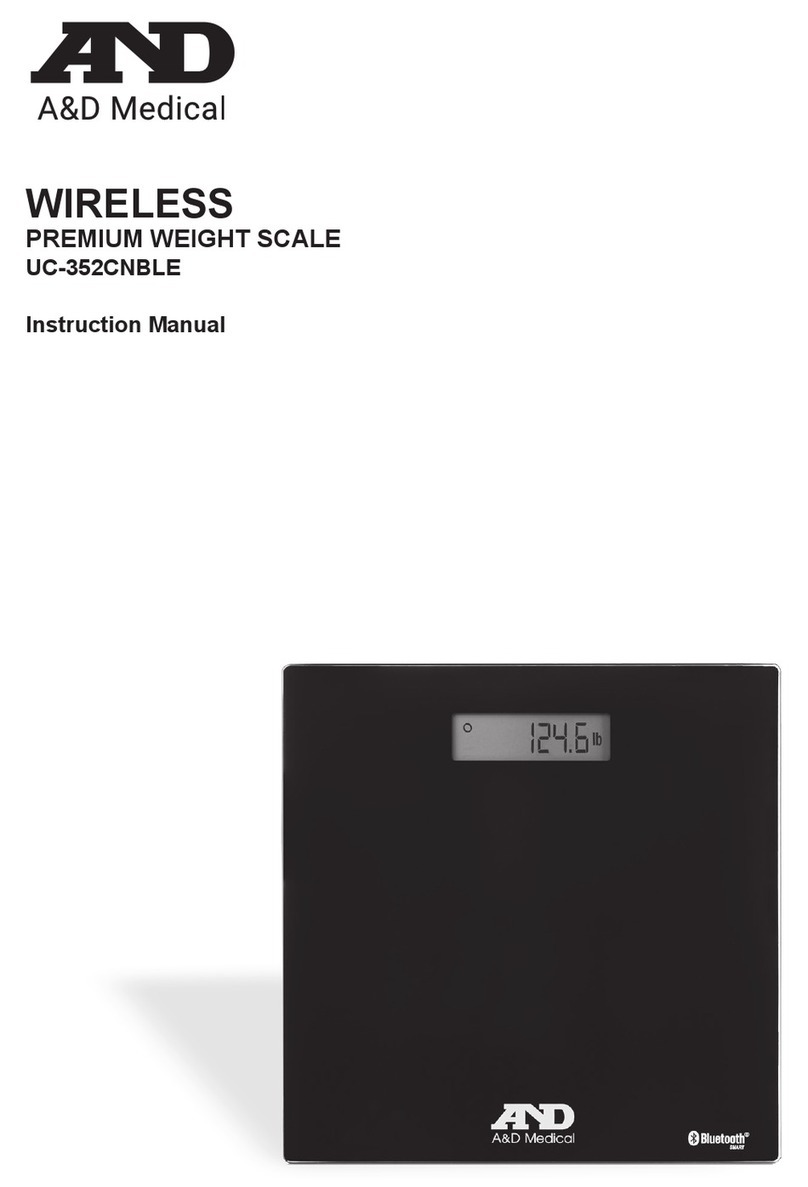
15
C. Measurement Results Explained
Results will be categorized into "low", "normal", "high", or "very high".
Body Mass Index (BMI)
BMI is a commonly used index by the World Health Organization (WHO),
utilizing height and weight to classify underweight, normal, over, and
obesity in adults.
Risk of obesity-related disease
(World Health Organization adult BMI standards)
Body Water
Body water refers to the water contained in the tissues, blood, bones, and
elsewhere. Body water in a healthy (non-obese) adult can fluctuate by
roughly 5% daily, influenced by physiological activity and consumption of
food and drink1. Due to larger size and muscle mass, healthy adult men
tend to have more body water than women (on average)2.
Typically, children have a higher percentage of body water than adults,
and body water levels reportedly decrease further around middle age as
part of the aging process3. In addition, various diseases can affect body
water percentage4.Therefore, BIA estimations should be used with
particular caution if subject's body water differs significantly from the
representative populations used to formulate BIA algorithms.
1Askew EW Present Knowledge in Nutrition (7th ed) 1996, p.98-107
2Lesser GT, Markofsky J. Body water compartments with human aging using fat-free mass
as the reference standard. 1979. Am J Physiol, 236, p.R215-R220.
3Cameron CW, Guo SS, Zeller CM, Reo NV, Siervogel RM. Total body water for white adults
18 to 64 years of age: The Fels Longitudinal Study. 1999. Kidney Internationalk Vol.56 Issue
1, p.244-252
4Moore FD, Haley HB, Bering EA, Brooks L, Edelman I. Further observations on total body
water. Changes of body composition in disease. 1952. Surg Gynecol Obstet, 95, p.155-180
